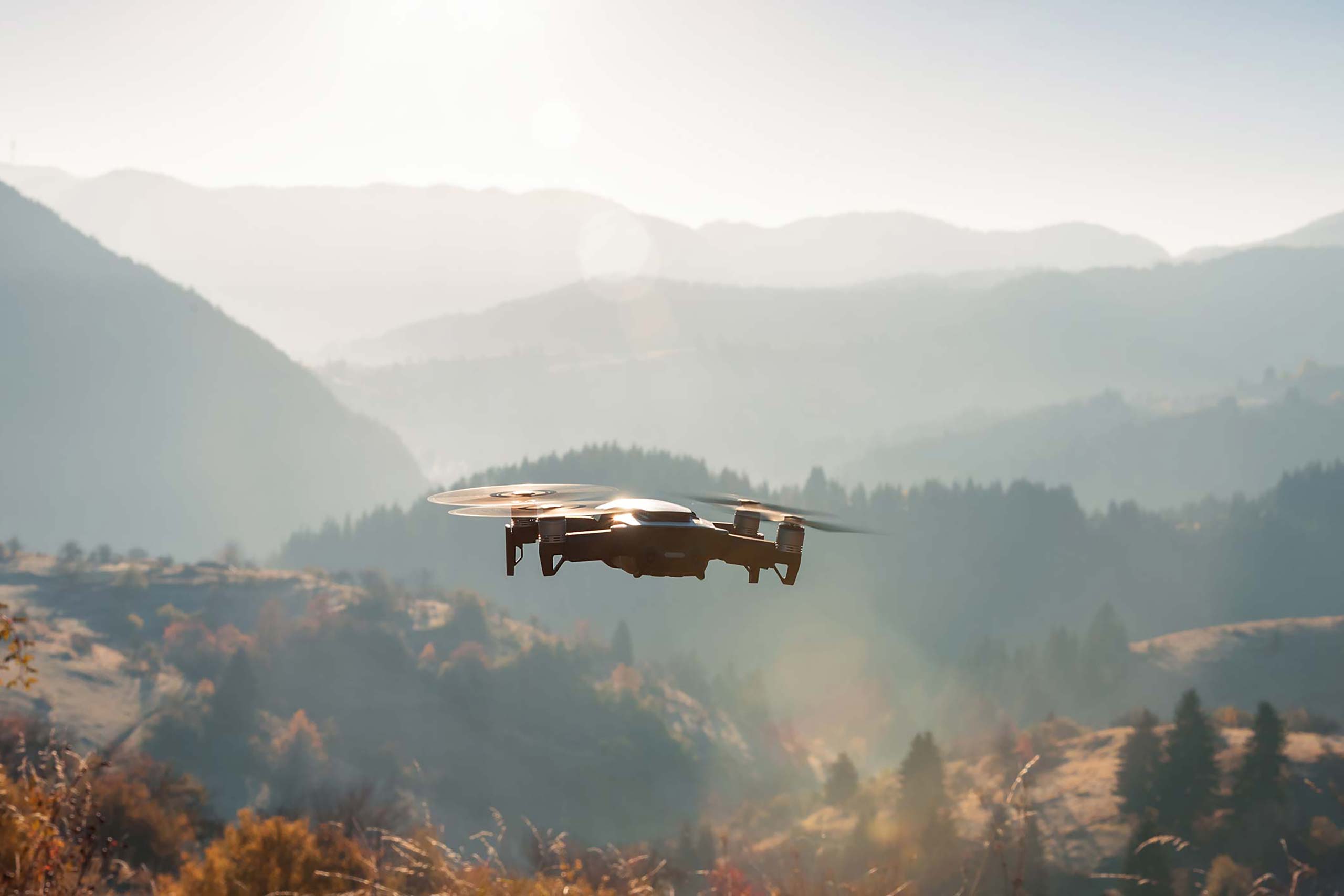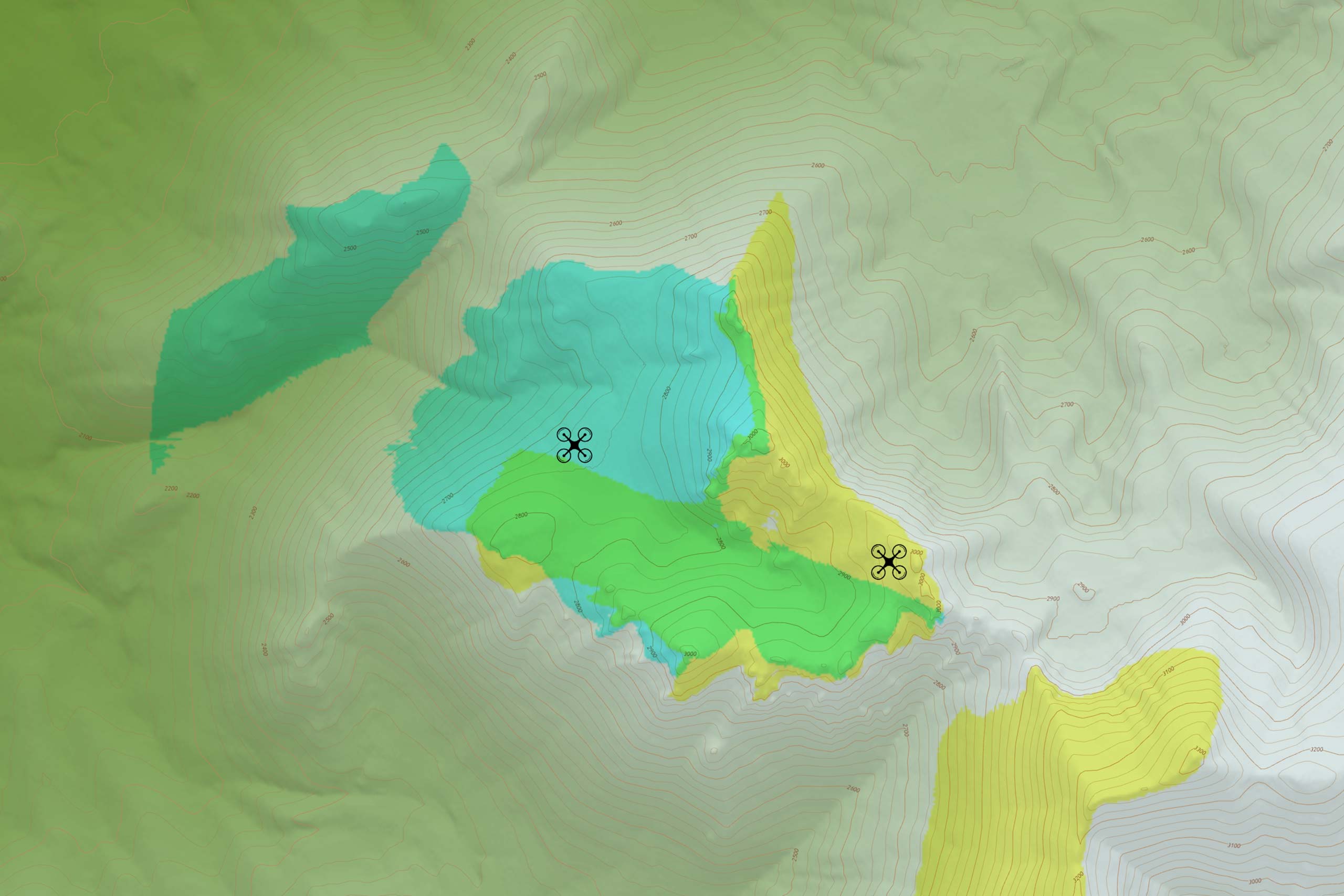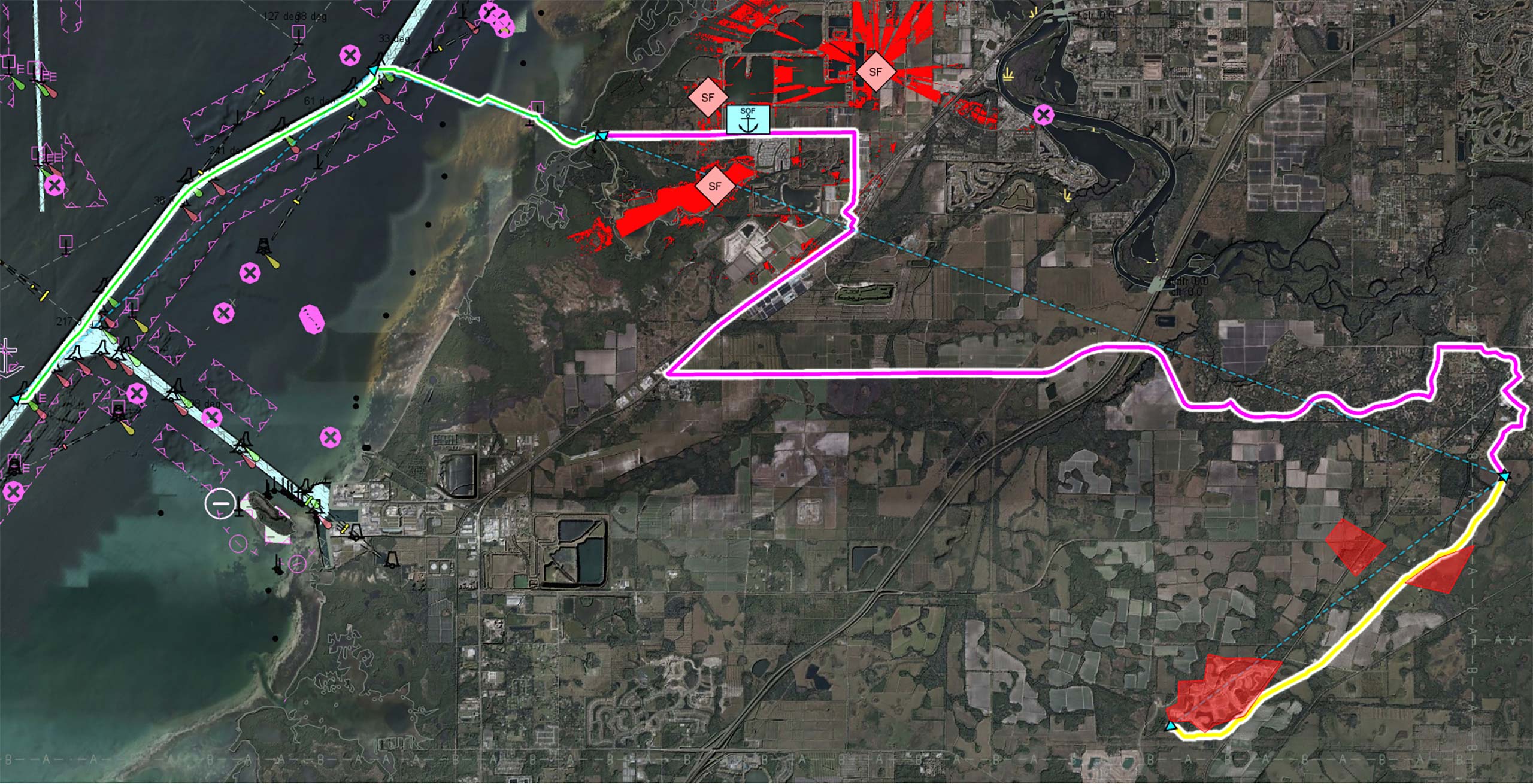Deriving insights
We can take this a step further. By combining the two units’ viewsheds, we can prepare for a scenario where their line of sight is obstructed by a ridge or other large obstacle.
In this case, a third unit such as a drone could act as a bridge between the other two. In the video below, two vehicles are moving along two roads parted by a ridge. These vehicles are not in each other’s line of sight, but there is still an overlap between the two vehicles’ viewsheds; this intersection is coloured green. By flying two drones over the ridge, we can bridge the connection between the two vehicles.
The open line of sight is displayed on the video as lines running between vehicle and drone. In a live scenario, we can use viewshed intersections, made visible through real-time line-of-sight analysis, to determine where to relocate our drones. If they keep within the green area, the drones will have a line of sight to both vehicles, enabling us to maintain the connection between them.
Drones bridging line of sight connection between two vehicles.





